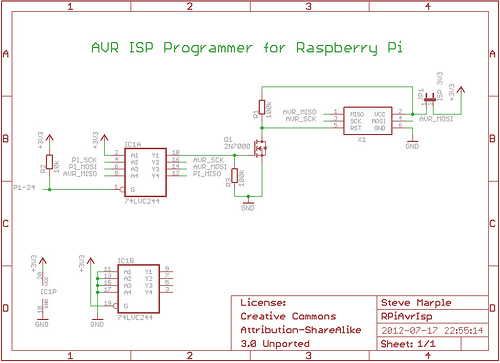
AVR GPS Locator using avr microcontroller

In this project, a GPS module is interfaced with an AVR microcontroller. The ATtiny2313 retrieves location data from the GPS and displays it on an LCD screen.
The project involves the integration of a GPS module with the ATtiny2313 microcontroller, which serves as the central processing unit. The GPS module is responsible for acquiring location data through satellite signals, while the microcontroller processes this data and controls the LCD display for output.
The circuit setup begins with the ATtiny2313, which is a low-power, 8-bit microcontroller from Atmel, featuring a 16 MHz clock speed and multiple I/O pins. The GPS module typically operates at 3.3V or 5V, making it compatible with the microcontroller's operating voltage. The GPS module communicates via a serial interface, often using the NMEA protocol to send location data, which includes latitude, longitude, and altitude information.
Connections are established between the GPS module's TX pin and one of the RX pins of the ATtiny2313 to facilitate data transmission. A suitable baud rate, commonly set at 9600 bps, is configured for reliable communication. The microcontroller processes the received NMEA sentences, parsing the relevant location data.
The LCD display, which can be a 16x2 character display, is interfaced with the microcontroller using a parallel interface. This requires several I/O pins for data and control signals. The microcontroller drives the LCD to present the parsed location data in a user-friendly format.
Power supply considerations must also be taken into account, ensuring that both the GPS module and the microcontroller receive adequate voltage and current. Bypass capacitors may be employed near the power pins of the components to filter out noise and stabilize the power supply.
Overall, this project serves as an effective demonstration of interfacing a GPS module with a microcontroller and displaying real-time location data, highlighting the capabilities of embedded systems in navigation applications.In this project i have interfaced an GPS with AVR microcontroller, the ATtiny2313 gets the location from the GPS and display it over the LCD display. 🔗 External reference
The project involves the integration of a GPS module with the ATtiny2313 microcontroller, which serves as the central processing unit. The GPS module is responsible for acquiring location data through satellite signals, while the microcontroller processes this data and controls the LCD display for output.
The circuit setup begins with the ATtiny2313, which is a low-power, 8-bit microcontroller from Atmel, featuring a 16 MHz clock speed and multiple I/O pins. The GPS module typically operates at 3.3V or 5V, making it compatible with the microcontroller's operating voltage. The GPS module communicates via a serial interface, often using the NMEA protocol to send location data, which includes latitude, longitude, and altitude information.
Connections are established between the GPS module's TX pin and one of the RX pins of the ATtiny2313 to facilitate data transmission. A suitable baud rate, commonly set at 9600 bps, is configured for reliable communication. The microcontroller processes the received NMEA sentences, parsing the relevant location data.
The LCD display, which can be a 16x2 character display, is interfaced with the microcontroller using a parallel interface. This requires several I/O pins for data and control signals. The microcontroller drives the LCD to present the parsed location data in a user-friendly format.
Power supply considerations must also be taken into account, ensuring that both the GPS module and the microcontroller receive adequate voltage and current. Bypass capacitors may be employed near the power pins of the components to filter out noise and stabilize the power supply.
Overall, this project serves as an effective demonstration of interfacing a GPS module with a microcontroller and displaying real-time location data, highlighting the capabilities of embedded systems in navigation applications.In this project i have interfaced an GPS with AVR microcontroller, the ATtiny2313 gets the location from the GPS and display it over the LCD display. 🔗 External reference





